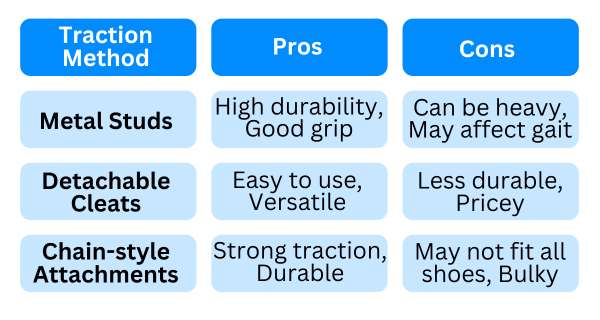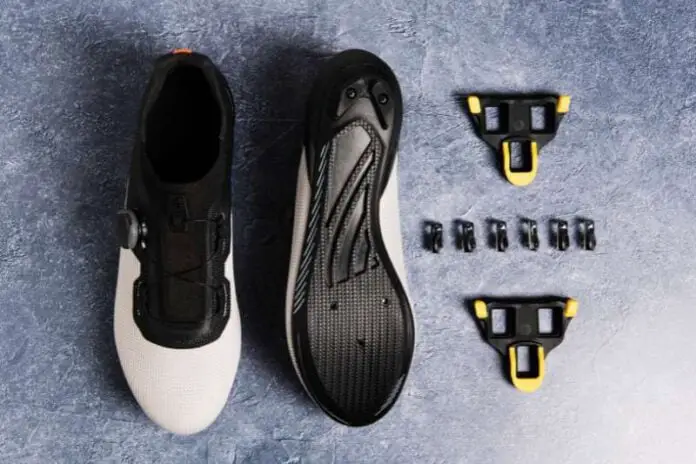Screws in running shoes provide grip by biting into the ice and snow. They can enhance traction for icy conditions.
Running in winter poses unique challenges, especially when dealing with icy terrain. To combat slippery surfaces, athletes and casual runners alike often modify their footwear. One effective method is the insertion of small screws into the soles of running shoes, which acts like studs, offering increased stability and reducing the risk of slips and falls.
This do-it-yourself approach is not only cost-effective but also customizable, allowing runners to place screws in areas where they need the most traction. This simple yet ingenious solution can make winter running a safer and more enjoyable experience for those unwilling to let a little ice stand in the way of their fitness goals.
Gaining Footing: Screws In Running Shoes
Running on ice is tricky. Your shoes need good grip. Screws in your shoes can help a lot. Tiny metal screws dig into the ice. This lets your shoes grab the ground better. It’s like having cleats on ice. They are easy to put in and take out.
Many runners use them. You don’t slip with these screws. Your winter runs become safer. And you can enjoy your run without worry. This simple trick can change your winter running game.
Choosing The Right Screws
Selecting the right screws in running shoes is essential. The ideal screws for shoes are sheet metal screws. These provide excellent traction. For winter runners, carbide-tipped screws are best. They grip ice better.
The length and diameter of the screw matter. Screws too long can hurt your feet. Too short, they won’t hold. A 3/8-inch length works well for most shoes. The diameter should be small, about 1/8 inch. This size ensures a good fit without damaging the shoe.
DIY Traction: Installing Screws
Installing screws in running shoes enhances grip on icy surfaces. This guide helps you do it safely. First, choose short screws to avoid discomfort. Use a screwdriver to carefully place each screw in the shoe’s sole. Space them evenly for balance.
Safety is crucial while handling tools. Always wear thick gloves to protect your hands. Work on a stable surface to prevent slips. Keep screws away from children and pets. By following these tips, you can safely improve your winter running experience.
Performance Analysis
Traction is key for runners seeking optimal performance. Studies show that screws in running shoes can enhance grip. This leads to improved stability during runs. The grip difference is notable on icy or slippery surfaces. Runners often find that screws provide a secure footing. This allows for better control and agility.
Speed gains are another potential benefit of adding screws. Athletes report feeling more confident and quick. Yet, it’s essential to balance the number of screws. Too many can add weight and reduce comfort. This balance is crucial for maintaining natural running mechanics.
Durability And Maintenance
Regular inspection of screw-in studs is essential for optimal performance. Look for signs of excessive wear such as blunted or worn screw tips. Check if the screws remain tightly secured in the shoe soles. Loose screws can lead to instability and injury.
To ensure screw longevity, clean them after each run. Use a brush to remove dirt and debris. Corrosion resistance is vital, so dry the screws thoroughly. Apply a lubricant if recommended by the manufacturer. This helps in preventing rust and maintains ease of future removal.
Replace screws promptly when they show significant wear. This maintains the shoe’s traction and safety. Always use the appropriate screwdriver to avoid stripping the screw heads. Keep spare screws handy for quick replacements.
Safety Considerations
Running with screws in shoes can lead to hazards. Sharp edges may cut the skin or cause wounds. There’s a risk of screws loosening over time, which might cause trips or falls. To stay safe, runners should regularly inspect their shoes for wear and tear.
- Use the correct size and type of screws.
- Check for any damage before and after runs.
- Ensure screws are tight to prevent movement.
- Choose proper terrain for screwed shoes.
Following these tips can help minimize injuries from running with screws in shoes. Always be mindful of your footwear’s condition to keep your runs safe and enjoyable.
Alternatives To Screws For Ice Running
Commercial traction aids offer a safe alternative to screws in running shoes. These aids include rubber soles with built-in metal studs and detachable cleats that grip ice. Runners can easily attach or remove them from their shoes. The ease of use and versatility are big pluses. Yet, some may find these aids less durable than screws. Also, they can be more expensive and heavier which might affect running performance.
Another popular choice is chain-style attachments. They wrap around the shoe for solid traction. But, they might not be ideal for all foot sizes. Runners should weigh the pros and cons of each option. They need to consider their running style and the terrain they will face.

Frequently Asked Questions
Where Do You Put Screws In Running Shoes?
You should not put screws in running shoes as it can damage the shoe and pose a safety risk. Instead, use traction devices designed for running shoes to improve grip in slippery conditions.
What Screws Are Best For Running Shoes?
Hex-head sheet metal screws provide excellent traction for running shoes on icy surfaces. Opt for short-length, 3/8 inch screws to avoid foot discomfort.
What Screws Are In Shoes For Traction?
Shoes for traction often use metal or hard rubber cleats, spikes, or studs. These provide grip on surfaces like ice, turf, or track.
Why Are All Shoes Mesh Now?
Mesh shoes offer breathability, comfort, and a lightweight design, making them popular for various activities. They’re also stylish and versatile for everyday wear.
Conclusion
As we wrap up, remember that adding screws in running shoes can be a game-changer. It’s a simple, cost-effective method to gain traction and improve safety during winter runs. Always prioritize correct installation and consult with professionals if in doubt.
Happy and secure running to all!


